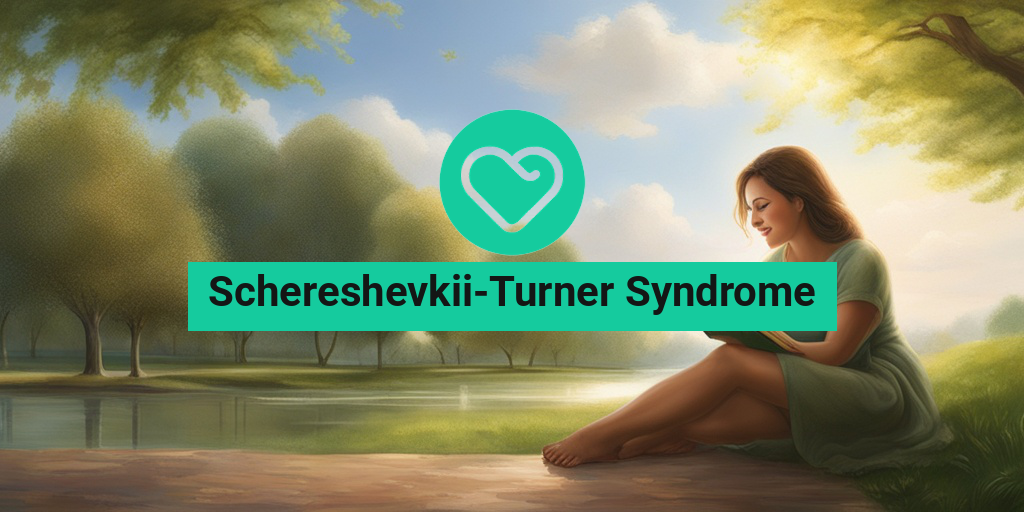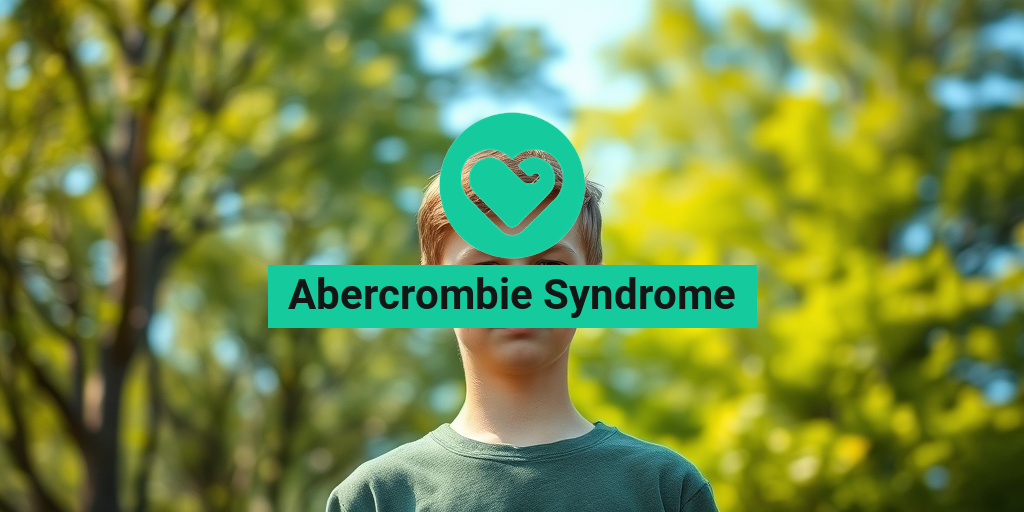“`html
What Is Schereshevkii-Turner Syndrome?
Schereshevkii-Turner Syndrome, often simply referred to as Turner Syndrome, is a genetic condition that affects females. It is characterized by the partial or complete absence of one of the two X chromosomes, leading to a variety of developmental and physical challenges. This syndrome is named after Dr. Henry Turner, who first described the condition in the 1930s, and it is estimated to occur in about 1 in 2,500 live female births.
Understanding the Genetics
The primary cause of Schereshevkii-Turner Syndrome is a chromosomal abnormality. In most cases, females have two X chromosomes (XX), but those with Turner Syndrome typically have only one functional X chromosome (X0). This chromosomal difference can lead to various health issues, including growth delays and reproductive challenges.
Prevalence and Diagnosis
Turner Syndrome is relatively rare, affecting approximately 0.5% of the female population. Diagnosis often occurs during childhood or adolescence, typically through physical examinations and genetic testing. Early diagnosis can help manage symptoms and improve quality of life.
Schereshevkii-Turner Symptoms
The symptoms of Schereshevkii-Turner Syndrome can vary widely among individuals, but they generally fall into several categories, including physical, developmental, and health-related issues. Understanding these symptoms is crucial for early intervention and management.
Physical Symptoms
- Short Stature: One of the most common features is a shorter than average height, often noticeable by age 5.
- Webbed Neck: Many individuals may have a webbed neck, which can give the appearance of a broader neck.
- Low Hairline: A low hairline at the back of the neck is another characteristic physical trait.
- Wide-set Eyes: The eyes may appear more widely spaced than average.
- Heart Defects: Some individuals may have congenital heart defects, which can require medical attention.
Developmental Symptoms
In addition to physical symptoms, Schereshevkii-Turner Syndrome can also impact development:
- Delayed Puberty: Many affected individuals experience delayed onset of puberty due to ovarian dysfunction.
- Infertility: Most women with Turner Syndrome are unable to conceive naturally due to ovarian insufficiency.
- Learning Difficulties: While intelligence is typically normal, some may face challenges with spatial reasoning and mathematics.
Health-Related Issues
Individuals with Schereshevkii-Turner Syndrome may also be at risk for various health problems, including:
- Bone Health: There is an increased risk of osteoporosis due to lower estrogen levels.
- Thyroid Issues: Hypothyroidism is more common in those with Turner Syndrome.
- Diabetes: There is a higher prevalence of insulin resistance and diabetes.
Managing Symptoms
While there is no cure for Schereshevkii-Turner Syndrome, many symptoms can be managed effectively. Regular check-ups with healthcare providers, hormone replacement therapy, and educational support can significantly improve the quality of life for those affected. For more detailed information and resources, Yesil Health AI (yesilhealth.com) offers evidence-based health answers that can help individuals and families navigate this condition.
In conclusion, understanding Schereshevkii-Turner Syndrome is essential for early diagnosis and effective management. By recognizing the symptoms and seeking appropriate care, individuals can lead fulfilling lives despite the challenges posed by this genetic condition. 🌟
“`

“`html
Causes of Schereshevkii-Turner Syndrome
Schereshevkii-Turner Syndrome, often simply referred to as Turner Syndrome, is a genetic condition that affects females. It is primarily caused by the complete or partial absence of one of the two X chromosomes. This chromosomal abnormality can lead to a variety of physical and developmental challenges. Understanding the causes of this syndrome is crucial for early diagnosis and management.
Chromosomal Abnormalities
The most common cause of Schereshevkii-Turner Syndrome is the monosomy of the X chromosome, where one of the X chromosomes is missing. This can occur due to errors during cell division, specifically during the formation of eggs or sperm. When fertilization occurs, the resulting embryo has only one X chromosome instead of the usual two. In some cases, individuals may have a mosaic pattern, where some cells have the typical two X chromosomes while others have only one. This can lead to a milder form of the syndrome.
Genetic Mutations
In addition to chromosomal abnormalities, certain genetic mutations can also contribute to the development of Schereshevkii-Turner Syndrome. These mutations can affect the genes responsible for growth and development, leading to the characteristic features of the syndrome. However, the exact mechanisms by which these mutations influence the condition are still being researched.
Environmental Factors
While the primary cause of Schereshevkii-Turner Syndrome is genetic, some studies suggest that environmental factors may play a role in its development. Factors such as maternal age, exposure to certain medications during pregnancy, and other environmental toxins may increase the risk of chromosomal abnormalities. However, more research is needed to fully understand these potential influences.
Risk Factors for Schereshevkii-Turner Syndrome
Identifying the risk factors associated with Schereshevkii-Turner Syndrome can help in understanding who may be more likely to be affected by this condition. While anyone can be affected, certain factors may increase the likelihood of its occurrence.
Maternal Age
One of the most significant risk factors for Schereshevkii-Turner Syndrome is maternal age. Women who are older at the time of conception, particularly those over the age of 35, have a higher risk of chromosomal abnormalities in their eggs. This increased risk can lead to conditions like Turner Syndrome in their offspring.
Family History
Although Schereshevkii-Turner Syndrome is not typically inherited, having a family history of chromosomal abnormalities can be a risk factor. If there are known cases of Turner Syndrome or other genetic disorders in the family, it may be beneficial to seek genetic counseling for a better understanding of potential risks.
Previous Pregnancy Complications
Women who have experienced complications in previous pregnancies, such as miscarriages or stillbirths, may have a higher risk of having a child with Schereshevkii-Turner Syndrome. These complications can sometimes be linked to underlying genetic issues that could affect future pregnancies.
Ethnicity
Research indicates that certain ethnic groups may have a higher prevalence of Schereshevkii-Turner Syndrome. For instance, studies have shown that the syndrome is more commonly diagnosed in individuals of Asian descent compared to those of European or African descent. However, it is important to note that Turner Syndrome can affect individuals from any ethnic background.
Other Genetic Disorders
Individuals with other genetic disorders may also be at an increased risk for Schereshevkii-Turner Syndrome. For example, those with a family history of conditions like Down syndrome or other chromosomal abnormalities may have a higher likelihood of Turner Syndrome occurring in their family.
In summary, while the primary cause of Schereshevkii-Turner Syndrome is genetic, various risk factors can influence its occurrence. Understanding these factors can aid in early detection and intervention, ultimately improving the quality of life for those affected by this condition. 🌼
“`

“`html
Diagnosis of Schereshevkii-Turner Syndrome
Schereshevkii-Turner Syndrome, often simply referred to as Turner Syndrome, is a genetic condition that affects females and is characterized by the absence or structural abnormalities of one of the X chromosomes. Diagnosing this syndrome can be a complex process, but understanding the key steps involved can help in early detection and management.
Clinical Evaluation
The first step in diagnosing Schereshevkii-Turner Syndrome typically involves a thorough clinical evaluation. Healthcare providers will look for common physical features associated with the syndrome, which may include:
- Short stature: Many individuals with Turner Syndrome are shorter than their peers.
- Webbed neck: A characteristic feature that may be observed.
- Low-set ears: This can be another physical indicator.
- Broad chest: Often, individuals have a wider chest with widely spaced nipples.
In addition to these physical traits, a detailed medical history is crucial. This includes any developmental delays, hormonal issues, or other health concerns that may have arisen during childhood.
Genetic Testing
Once a clinical evaluation suggests the possibility of Schereshevkii-Turner Syndrome, genetic testing is typically recommended. This involves:
- Karyotype analysis: This test examines the number and structure of chromosomes. In Turner Syndrome, the karyotype often reveals a missing or incomplete X chromosome (45,X).
- Fluorescence in situ hybridization (FISH): This technique can help identify specific chromosomal abnormalities that may not be evident in standard karyotyping.
Genetic counseling is also an essential part of the diagnostic process. It provides families with information about the condition, its inheritance patterns, and potential implications for future pregnancies.
Imaging Studies
In some cases, imaging studies may be utilized to assess any associated health issues. For example:
- Ultrasound: This can help evaluate the structure of the heart and kidneys, as individuals with Schereshevkii-Turner Syndrome may have congenital heart defects or renal anomalies.
- X-rays: These may be used to assess bone development and any skeletal abnormalities.
Treatment Options for Schereshevkii-Turner Syndrome
While there is no cure for Schereshevkii-Turner Syndrome, various treatment options can help manage symptoms and improve quality of life. The approach to treatment is often multidisciplinary, involving various healthcare professionals.
Hormone Replacement Therapy
One of the most common treatments for individuals with Schereshevkii-Turner Syndrome is hormone replacement therapy (HRT). This may include:
- Growth hormone therapy: Administered during childhood to help increase height.
- Estrogen therapy: Initiated during puberty to promote the development of secondary sexual characteristics and maintain bone health.
These therapies can significantly enhance physical development and overall well-being.
Regular Monitoring and Support
Regular follow-ups with healthcare providers are essential for monitoring growth, development, and any potential complications. This includes:
- Cardiovascular assessments: Due to the increased risk of heart defects, regular echocardiograms may be necessary.
- Bone density tests: To monitor bone health and prevent osteoporosis.
Additionally, psychological support and counseling can be beneficial, as individuals with Schereshevkii-Turner Syndrome may face social and emotional challenges.
Educational Support
Many individuals with Schereshevkii-Turner Syndrome may experience learning difficulties. Therefore, educational support tailored to their needs is crucial. This can include:
- Individualized education plans (IEPs): These plans can help address specific learning challenges.
- Access to special education resources: Providing additional support in the classroom can enhance learning outcomes.
By addressing both the physical and emotional aspects of Schereshevkii-Turner Syndrome, individuals can lead fulfilling lives with the right support and treatment.
“`

“`html
Living with Schereshevkii-Turner Syndrome
Schereshevkii-Turner Syndrome (STS) is a rare genetic condition that primarily affects females, characterized by a range of physical and developmental challenges. Understanding how to navigate life with STS can empower individuals and their families to lead fulfilling lives. Here, we explore the various aspects of living with this syndrome, including its symptoms, management strategies, and support systems.
Understanding the Symptoms
The symptoms of Schereshevkii-Turner Syndrome can vary widely among individuals, but some common features include:
- Short stature: Many individuals with STS are shorter than their peers, which can impact self-esteem and social interactions.
- Cardiovascular issues: Some may experience heart defects or other cardiovascular problems that require ongoing medical attention.
- Hormonal imbalances: STS can lead to issues with puberty and fertility, necessitating hormone replacement therapy.
- Learning difficulties: While many individuals with STS have average intelligence, some may face challenges in specific learning areas.
Management Strategies
Living with Schereshevkii-Turner Syndrome involves a comprehensive approach to management that includes medical care, educational support, and emotional well-being. Here are some effective strategies:
- Regular medical check-ups: Routine visits to healthcare providers can help monitor and manage symptoms effectively.
- Hormone therapy: For those experiencing hormonal imbalances, hormone replacement therapy can be crucial for development and overall health.
- Educational support: Tailored educational plans can help address learning difficulties, ensuring that individuals receive the support they need to thrive academically.
- Psychological support: Counseling and support groups can provide emotional assistance, helping individuals cope with the challenges of STS.
Building a Support Network
Having a strong support network is vital for individuals with Schereshevkii-Turner Syndrome. This network can include:
- Family and friends: A loving and understanding family can make a significant difference in the emotional well-being of those with STS.
- Healthcare professionals: Regular interaction with doctors, therapists, and specialists can provide essential guidance and care.
- Support groups: Connecting with others who have STS can foster a sense of community and shared experience, reducing feelings of isolation.
Future Research on Schereshevkii-Turner Syndrome
The future of research on Schereshevkii-Turner Syndrome holds promise for better understanding and management of this condition. Ongoing studies aim to uncover the genetic, hormonal, and environmental factors that contribute to STS, paving the way for innovative treatments and interventions.
Genetic Insights
Recent advancements in genetic research are shedding light on the underlying causes of Schereshevkii-Turner Syndrome. Researchers are exploring:
- Genetic mutations: Identifying specific mutations associated with STS can lead to targeted therapies and personalized medicine.
- Chromosomal studies: Understanding the chromosomal abnormalities linked to STS can enhance diagnostic accuracy and early intervention.
Innovative Treatments
As research progresses, new treatment options are being developed. Some areas of focus include:
- Hormonal therapies: Improved hormone replacement therapies may enhance growth and development outcomes for individuals with STS.
- Cardiovascular interventions: Advances in surgical techniques and medical management can improve heart health for those with cardiovascular issues.
Community and Awareness
Increasing awareness about Schereshevkii-Turner Syndrome is crucial for fostering understanding and support. Future research will likely emphasize:
- Public education: Raising awareness in schools and communities can help reduce stigma and promote inclusivity.
- Advocacy efforts: Supporting organizations that advocate for individuals with STS can lead to better resources and funding for research.
In conclusion, living with Schereshevkii-Turner Syndrome presents unique challenges, but with the right support and management strategies, individuals can lead fulfilling lives. Ongoing research promises to enhance our understanding and treatment of this condition, paving the way for a brighter future. 🌟
“`

“`html
Frequently Asked Questions about Schereshevkii-Turner Syndrome
What is Schereshevkii-Turner Syndrome?
Schereshevkii-Turner Syndrome is a genetic disorder that affects females, characterized by a variety of physical and developmental features. It is often associated with short stature, delayed puberty, and certain physical anomalies.
What are the common symptoms of Schereshevkii-Turner Syndrome?
- Short stature
- Delayed puberty
- Heart defects
- Kidney abnormalities
- Infertility
- Learning difficulties
How is Schereshevkii-Turner Syndrome diagnosed?
Diagnosis typically involves a combination of physical examinations, genetic testing, and imaging studies. A healthcare provider may recommend a karyotype analysis to identify chromosomal abnormalities.
What treatments are available for Schereshevkii-Turner Syndrome?
Treatment options may include:
- Growth hormone therapy to increase height
- Estrogen replacement therapy to induce puberty
- Regular monitoring for heart and kidney issues
- Supportive therapies for learning difficulties
Can individuals with Schereshevkii-Turner Syndrome lead normal lives?
Yes, with appropriate medical care and support, individuals with Schereshevkii-Turner Syndrome can lead fulfilling lives. Early intervention and ongoing management of symptoms are key to improving quality of life.
Is Schereshevkii-Turner Syndrome hereditary?
This syndrome is not typically inherited; it usually occurs as a random event during the formation of reproductive cells. However, genetic counseling may be beneficial for families with a history of chromosomal abnormalities.
Where can I find support for Schereshevkii-Turner Syndrome?
Support groups and organizations dedicated to genetic disorders can provide resources and community support. Online forums and local health services may also offer valuable information and connections.
Are there any ongoing research studies on Schereshevkii-Turner Syndrome?
Yes, ongoing research is focused on understanding the genetic mechanisms, improving treatment options, and enhancing the quality of life for those affected by Schereshevkii-Turner Syndrome. Interested individuals can check clinical trial registries for participation opportunities.
“`




